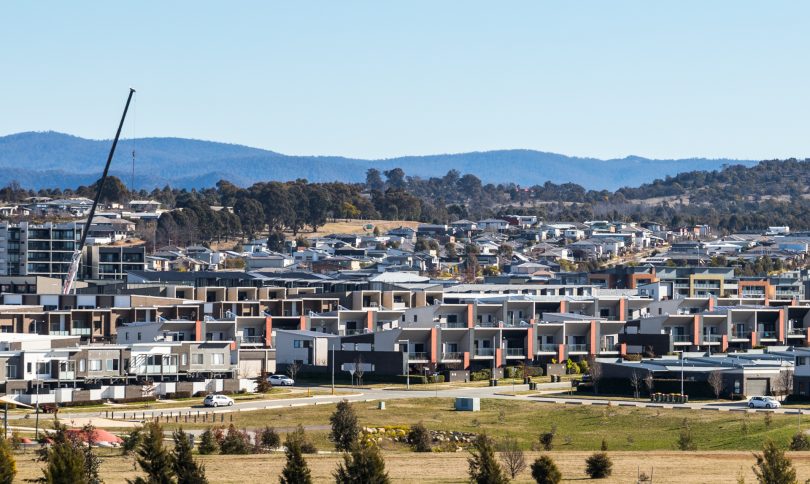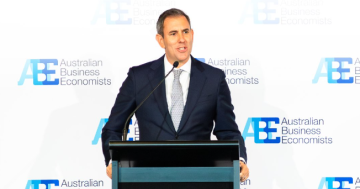
Housing supply is not keeping up with demand and rents are increasingly unaffordable. Photo: Michelle Kroll.
Both of Australia’s main political parties have responded to the latest figures showing a housing crisis in the country by declaring it a priority issue that requires every idea on the table …
Just kidding.
Despite the alarming latest Anglicare report showing rental affordability and vacancy rates at record lows, it’s really just more of the same on offer and likely to produce the same failed outcomes.
Labor has promised to fund 30,000 new social housing dwellings, but it has buried and cremated any move to reform the tax settings that favour property speculation that many economists say has fed home prices and, subsequently, rents.
And while 30,000 may sound a lot, spread across the country, it certainly won’t be anywhere near a solution.
The Coalition’s focus, as ever, is on home ownership with its Home Guarantee Scheme, guaranteed to help a few and boost prices even more, and of course, Labor will have its version pitched at regional residents.
Labor has also proposed its Help to Buy scheme for 10,000 eligible middle-income homebuyers, in which the government provides an equity contribution of up to 40 per cent of the purchase price of a new home and up to 30 per cent of the purchase price for an existing home.
Again this will just feed demand and prices, and seems more about votes than fixing the structural problems with Australia’s housing market.
The Coalition does fund housing through the National Housing Finance and Investment Corporation and National Housing and Homelessness Agreement with the states and territories and provides rent assistance.
But with more people being locked out of buying their own home and the housing supply not keeping up, these measures are not making a dent.
Whole swathes of Australian society on fixed or low to medium incomes live in housing stress or outright poverty, and more people face the prospect of homelessness.
In the ACT, where there is a vacancy rate of just 0.5 per cent and the highest median rents in the country, Anglicare says there are literally only a handful of affordable properties for some welfare recipients and none for others.
This will only get worse with the return of migrant workers and international students.
New research calls for a broader approach to the problem and looks, not surprisingly, at how the Nordic countries run their housing policies.
It says Australia has an over-reliance on just two housing options – private homeownership and private renting – and needs to reinvest in social housing and adopt different housing models if the country is to make any impact on the affordability crisis.
In partnership with Deakin University, the Australia Institute’s Nordic Policy Centre says Australia needs to lift its proportion of social housing from 4 per cent – down from 7 per cent in the 1990s – to double digits.
It says Sweden and Norway use the cooperative model, amounting to 22 per cent of the total housing stock, while in Norway, it is 15 per cent, but 40 per cent in the capital, Oslo.
Sweden, Norway and Denmark also have extensive co-ownership whereby individuals own, use, and control their own dwellings but shared spaces and property are owned jointly and managed collectively with neighbouring members of a housing co-operative, which improves affordability.
Finland’s ‘Finnish Housing First Principle’ views housing as the first step to solving a homeless person’s social and health problems which, coupled with the nation’s belief in the notion that people have a right to decent housing and useful social services, has produced an impressive reduction in homelessness.
Finland has less than one homeless person per 100,000 people, compared to Australia’s nearly five homeless people per 100,000 people. In Finland, the government is aiming to eliminate homelessness by 2027.
Centre convenor Professor Andrew Scott says Australian governments needed to rethink their approaches and policies and pointed to the $3.5 trillion tied up in superannuation funds that could fund new housing.
“If we are to have any hope of tackling Australia’s housing affordability crisis, policymakers must stop favouring investors over tenants and shift the priority in housing policy to supporting low- and middle-income earners who simply want a secure place to live,” Professor Scott says.
“It is no secret that housing is expensive in Australia. Buying a house is hard, and being a renter has many of its own problems. Housing policies in Nordic nations prioritise homes to live in, rather than houses as investments.”
He says the Federal Government should require some of the collective capital in superannuation funds to be invested in affordable housing to ensure fund members can have an adequate retirement.
“This will strengthen the presence of ethical, not-for-profit private housing developers of the kind which in Denmark have created a rental co-operative sector which provides security of tenure and affordable housing for one-fifth of the nation’s population,” Professor Scott says.
This calls for a revolution in thinking and the destigmatising of social and public housing because that is where many will need to be accommodated in an economy where wages are so out of kilter with property prices.
The ACT Government is investigating build-to-rent models and several private sector proposals are in the works that will add to the rental stock, but these are apartments, with most destined to be at the middle to higher end of the market.
A mix of housing to support all needs is required.
The ACT is also in the middle of a public housing renewal program but the social services sector believes the number of dwellings will not be anywhere near enough.
Realistically, a small jurisdiction like the ACT needs federal help, and ideally, there should be national leadership for a coordinated approach.
Simply continuing with the same policies will only reap the same results. The Nordic approaches may not be a panacea, but they are worth putting into the mix.
But the nation will have to get past the election first because ideas that might attract attention are in short supply, just like affordable housing options.





















